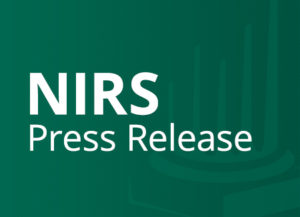April 28, 2010, Washington, D.C. – A new study finds public sector employees earn less than comparable private sector employees. Press/interested parties webinar & conference call at 11 AM ET on Wednesday, April 28, 2010 at 11 AM ET.
An analysis spanning two decades shows the pay gap between public and private sector employees has widened in recent years. These findings are contained in a new report commissioned by the Center for State and Local Government Excellence (Center) and the National Institute on Retirement Security (NIRS).
The study, “Out of Balance? Comparing Public and Private Sector Compensation Over 20 Years,” provides an original analysis of data from the U.S. Bureau of Labor Statistics and finds that:
- Jobs in the public sector typically require more education than private sector positions. Thus, state and local employees are twice as likely to hold a college degree or higher as compared to private sector employees. Only 23% of private sector employees have completed college as compared to about 48% in the public sector.
- Wages and salaries of state and local employees are lower than those for private sector employees with comparable earnings determinants such as education and work experience. State workers typically earn 11% less and local workers 12% less.
- During the last 15 years, the pay gap has grown – earnings for state and local workers have generally declined relative to comparable private sector employees.
- The pattern of declining relative earnings remains true in most of the large states examined in the study, although there does exist some state level variation.
- Benefits make up a slightly larger share of compensation for the state and local sector. But even after accounting for the value of retirement, healthcare, and other benefits, state and local employees earn less than private sector counterparts. On average, total compensation is 6.8% lower for state employees and 7.4% lower for local employees than for comparable private sector employees.
“The picture is clear. In an apples-to-apples comparison, state and local government employees receive less compensation than their private sector counterparts,” said Keith A. Bender, report co-author and associate professor, Department of Economics at the University of Wisconsin-Milwaukee. “These public sector employees earn less than they would earn if they took their skills to the private sector,” he added.
John S. Heywood, report co-authorand distinguished professor, Department of Economics at the University of Wisconsin-Milwaukee said, “Jobs in state and local governments consist disproportionately of occupations that demand more education and skills. Indeed, accounting for these differences is critical in understanding compensation patterns.
The study sheds light on a recent survey of government hiring managers, sponsored by the Center. Elizabeth K. Kellar , president and chief executive officer of the Center reported, “Hiring managers told us that despite the economy, they find it difficult to fill vacancies for highly-skilled positions such as engineering, environmental sciences, information technology and healthcare professionals. The compensation gap may have something to do with this.
Beth Almeida, NIRS executive director said, “For a long time, there has been a compensation trade-off in public sector jobs – better benefits come with lower pay as compared with private sector jobs. This study tells us that is still true today.” She added, “What’s striking is that on a total compensation basis looking at pay and benefits; employees of state and local government still earn less than their private sector counterparts.
A webinar/conference call will be held on Wednesday, April 28, 2010 at 11 AM ET with the report authors to review the findings a respond to questions.
Pre-register for the webinar at:https://www2.gotomeeting.com/register/683193490
Those registering online will be provided with a link to access the online presentation, as well as the dial-in number and password. To ensure access at 11 AM, please log on and dial in at 10:45 AM.
For phone only, Dial In is 773-945-1011 and Access Code is 497-863-224. Only participants logged in online to the webinar will be able to ask questions. Participants not logged in online can participate via phone in listen-only mode.
The full report, PowerPoint, Fact Sheet and FAQ are available here.
ABOUT
The Center for State and Local Government Excellence helps state and local governments become knowledgeable and competitive employers so they can attract and retain a talented and committed workforce. More information is available at www.slge.org. The National Institute on Retirement Security is a non-profit organization established to contribute to informed policymaking by fostering a deep understanding of the value of retirement security to employees, employers, and the economy through national research and education programs. More information is available at www.nirsonline.org.
